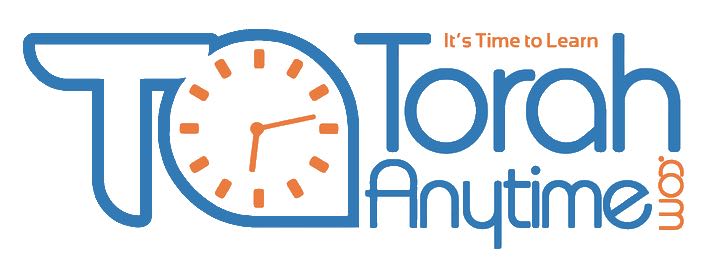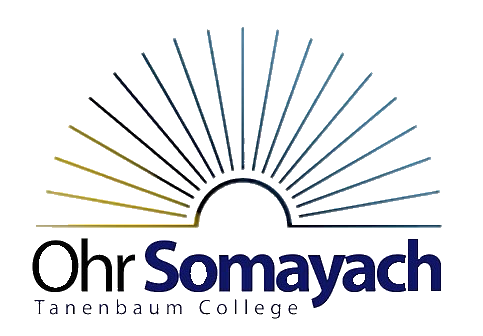Sukkos
/One of the highlights of the Mussaf davening on Yom Kippur was the highlight of Yom Kippur in the time of the Bais HaMikdash – the Avodah of the Kohain Gadol. The mishayos in Yoma describe how step by step the Kohain Gadol would work his way up through the Avodah until he would finally enter the Kodesh Hakadoshim, the Holy of Holies. The Chazal tell us that at the conclusion of Yom Kippur the Kohain Gadol would make a festive celebration for his friends and family. The question is what exactly was the nature of this celebration?
Now when I was young I always took it for granted that the main purpose of the celebration was to celebrate the fact that he came out alive. We know that if the Kohain Gadol made a mistake in the Kodesh KaKadoshim he would die. In fact, they tied a rope around him so that if he did die, they could pull him out. This might explain why there was such a large turnover of Kohanim Gedolim in the time of the second Bais HaMikdash. So the obvious explanation was that he was probably just happy to get out of there alive.
On further examination though, it seems hard to comprehend. The Kohain Gadol, the individual with the highest single potential for holiness, enters the holiest spot in the Universe on the holiest day of the year and his entire thought process is – Hashem, please don’t kill me? Does he go through the entire Avodah with no more intention than a technician in a nuclear power plant? So that when Yom Kippur is over he makes a party – “Boruch Hashem I don’t have to go back in there for a year!”
Reb Yitzchok Izzak Sher, the Rosh Yeshiva of Slobodka gives an answer to this problem that I think is essential for us to understand if we want to get the most out of this time of year. We know the famous gemera in Berachos that tells us that the Chassidim HaRishonim used to spend an hour before every tefilla, an hour in tefilla (Shemonah Esrei) and an hour after Shemona Esrei. The hour beforehand is pretty obvious, they spent the time saying Tehillim, cleansing their thoughts and focusing themselves on the coming encounter with HaKodesh Boruch Hu. The hour of Tefillah itself is also pretty obvious – they were saying Shemona Esrei. But what were they doing for the third hour?
I once had a student in a seminary who told me it was obvious. Just like in aerobics you have to have a “cool down” period, that was what they did after davening. Personally, I find that hard to accept. You mean they spent an hour in intense spiritual preparation, an hour in sublime prayer and then an hour sitting down catching their breath? “Phew! I’m exhausted. Did you see, I was just standing for an hour? That was some davening. What’s for lunch?” That was how they reacted after two hours of intense kedusha? And they did this “cooling down” for three hours a day!
Rather, the first hour was in fact an hour of intense concentration and preparation. The second hour was an hour of intense tefilla, that lifted them up to the highest spiritual realms. And the third hour was a time to come back to Earth. But not to readjust to the physical world. Just the opposite – to figure out how to take those levels of intense kedusha and bring them back down to Earth. To figure out how we can maintain that intense level while living in this world.
We see this in the way Shachris was set up. Unfortunately, few people take the time to experience a total Shachris. They come in late (always with wonderful reasons, I should add) and are all experts in the halachos of what to leave out. Some people have even institutionalized a bidieved situation. I was once speaking about an inyan regarding the saying of korbonos and a fellow raised his hand and said “Rabbi, in our shul we don’t say korbonos”. When I explained that you are really supposed to, he grew indignant as if I was attacking an old and honorable minhag. Maybe I was.
In any event, the way Shachris is supposed to work is by first saying the korbon Tamid, the animal sacrifice. Then we move up to the ketores, the incense offering. From there we advance to Pesukei D’Zimra and praise Hashem with our ability of speech. We continue on to the Birkas Shema and Krias Shema, recognizing not the good that Hashem does, but understanding that everything is Hashem. Finally we reach a crescendo in Shemona Esrei where we reach a level of a Malach, standing with our feet together in total connection to Hashem. Then we move back down. At Tachanun we turn our head away as we begin our descent. We repeat Ashrei which we said in Pesukei D’Zimra, and we end up back at the Ketores. But we don’t move all the way down to an animal offering. We understand that we go all the way up in tefilla and we have to come back down, but we have to figure out how to bring the kedusha of shomayim down here and not just return to where we were.
That idea, says Reb Yitzchok Izzak Sher, is what the Kohain Gadol did on Yom Kippur. He went through the Avodah moving higher and higher until he was in the Kadosh Hakadoshim, the Holy of Holies. The one “place” on Earth that is beyond time and space – the place of the most intense kedusha that can be discerned – then he came back down to Earth. The celebration was an opportunity to recognize the heights he had reached and to figure out how to make it a part of the rest of the year and the rest of his life.
Which finally brings us to Sukkos. I know, I know, you were starting to give up hope for me, thought maybe I don’t pay attention to the title of my piece. But with luck, the talented editors of the English HaModiah will take a quote from the end of the article to stick in the little box so people will hang in there.
We tend to think of Rosh Hashana and Yom kippur as a forty day process from Rosh Chodesh Elul until Yom Kippur. This is of course only partly true. The process really continues until Shmini Atzeres. The Torah says to take the Arba Minim “on the first day” to which the Chazal explain as the first day that you have a chance to sin. After Yom Kippur we are so busy buying our Arba Minim, building our Sukkas, shopping and cooking that who has time to sin. We come out of Yom Kippur and throw ourselves into total Avodas Hashem. Even though I know some people who manage to find time for an occasional sin or two, this year it’s nearly impossible. We have a Shabbos in the middle. This year we can really take the opportunity to go into Sukkos without any serious transgressions (as long as you can keep your cool when your enthusiastic children get glue all over the couch making their five hundred foot paper chains for the Sukka).
Then we go into Sukkos and we can feel ourselves in our Sukkas wrapped in the Shechina, feeling that closeness to Hashem that we felt on Yom Kippur when we were living like Malachim without food or drink – but feeling it in this world. And finally after a week of using a Sukka to feel that level of closeness, we reenter our homes and take the power of the Sukka with us. That’s Shemini Atzeres, a day when we celebrate the total connection to HaKadosh Boruch Hu while we eat, drink and live in our regular homes. We have finally managed to bring the kedusha of Yom Kippur into our regular lives, like the Kohain Gadol after he came out of the Kadosh HaKadoshim and the Chassidim HaRishonim used to do during that hour after Tefilla.
I hope this Sukkos will be an especially joyous one for you and your families and may we all be zoche to a beautiful year for us and our children and may all of Klal Yisroel merit the true geulah.
Good Yom Tov





